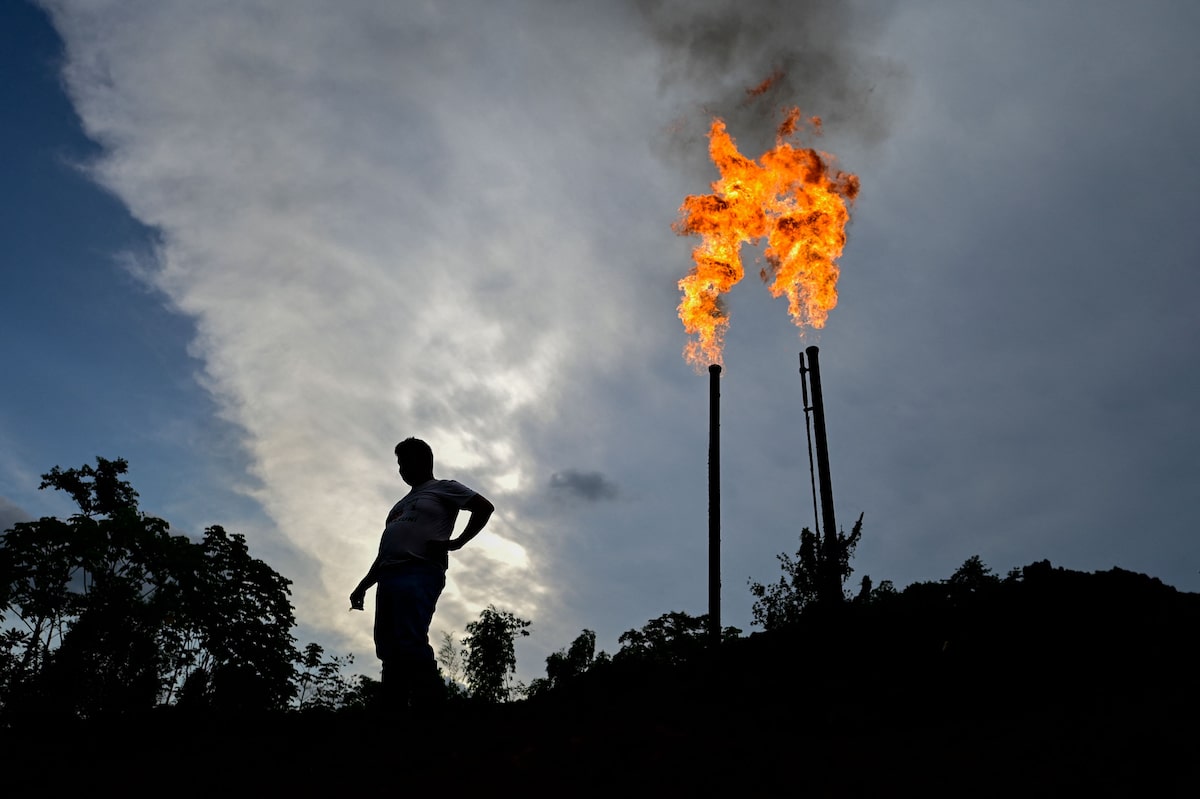IEA: Oil Demand to Decline Through 2028, but Not Enough to Meet Net Zero Goals

 Why you can trust us
Why you can trust us
Founded in 2005 as an Ohio-based environmental newspaper, EcoWatch is a digital platform dedicated to publishing quality, science-based content on environmental issues, causes, and solutions.
According to a new report from the International Energy Agency (IEA), the worldwide demand for oil is poised to dry up in the coming years.
Supply concerns triggered by the global energy crisis, along with high fuel prices, have sped up the shift to renewables, a press release from the IEA said.
According to the Oil 2023 medium-term market report, support from the aviation and petrochemical sectors will drive up global oil demand by six percent from 2022 to 2028, to 105.7 million barrels per day (mb/d). However, despite this rise, yearly growth is expected to shrink from 2.4 mb/d in 2023 to only 0.4 million barrels per day in 2028.
The amount of oil used for transportation fuels is predicted to decrease after 2026 as consumption is reduced due to electric vehicle (EV) growth, improved fuel economy and the expansion of biofuels.
“The shift to a clean energy economy is picking up pace, with a peak in global oil demand in sight before the end of this decade as electric vehicles, energy efficiency and other technologies advance,” said IEA Executive Director Fatih Birol in the press release.
Following three rocky years for global oil markets due to Russia’s invasion of Ukraine and the Covid-19 pandemic, markets are still predicted to tighten in the months to come with OPEC+ oil production cuts, but the report says market strains will ease in successive years.
Beginning next year, China’s oil demand growth is predicted to slow down considerably. However, a continued increase in consumption growth in developing and emerging countries, along with strong demand from the petrochemical sector, is predicted to more than offset a decrease in use by advanced economies.
In 2023, worldwide upstream oil and gas exploration, extraction and production investments are on track to reach levels not seen since 2015. If the trend continues, the level of investment would be enough to meet the predicted demand in the report period, but it “exceeds the amount that would be needed in a world that gets on track for net zero emissions,” the IEA said, as Reuters reported.
“For total oil demand to decline sooner, in line with the IEA’s Net Zero Emissions by 2050 Scenario… additional policy measures and behavioural changes would be required,” added the IEA.
The projections in the report are made under the assumption that, even as demand growth slackens, major oil producers will keep up their plans to increase capacity. It is expected that this will create a capacity buffer of a minimum of 3.8 mb/d, mostly in the Middle East. The report points out that China’s refining industry policy, decisions by OPEC+ and unknown global economic trends could affect the market.
In the medium term, oil producing countries that are not part of the OPEC+ alliance are expected to dominate increased global supply, led by Guyana, Brazil and the United States, with a predicted increase of 5.1 mb/d by 2028.
Capacity building plans within OPEC+ are led by Iraq, the United Arab Emirates and Saudi Arabia, with members from Asia and Africa predicted to face continuing declines, and sanctions causing a decrease in production by Russia. The net capacity gain for the 23 OPEC+ members is expected to be 0.8 mb/d for the report’s forecast period.
“Oil producers need to pay careful attention to the gathering pace of change and calibrate their investment decisions to ensure an orderly transition,” Birol said in the press release.
Subscribe to get exclusive updates in our daily newsletter!
By signing up, you agree to the Terms of Use and Privacy Policy & to receive electronic communications from EcoWatch Media Group, which may include marketing promotions, advertisements and sponsored content.

 233k
233k  41k
41k  Subscribe
Subscribe 




